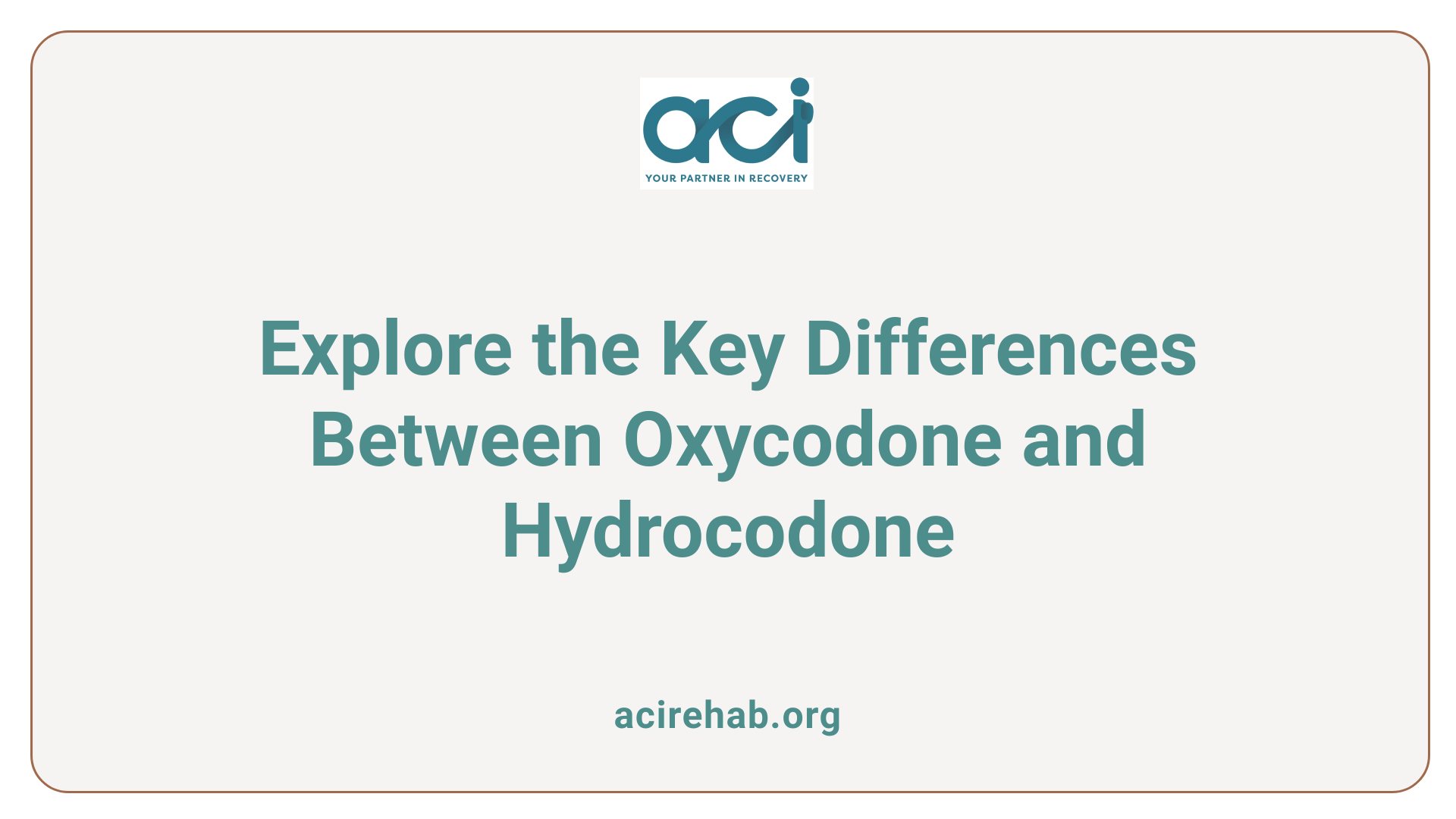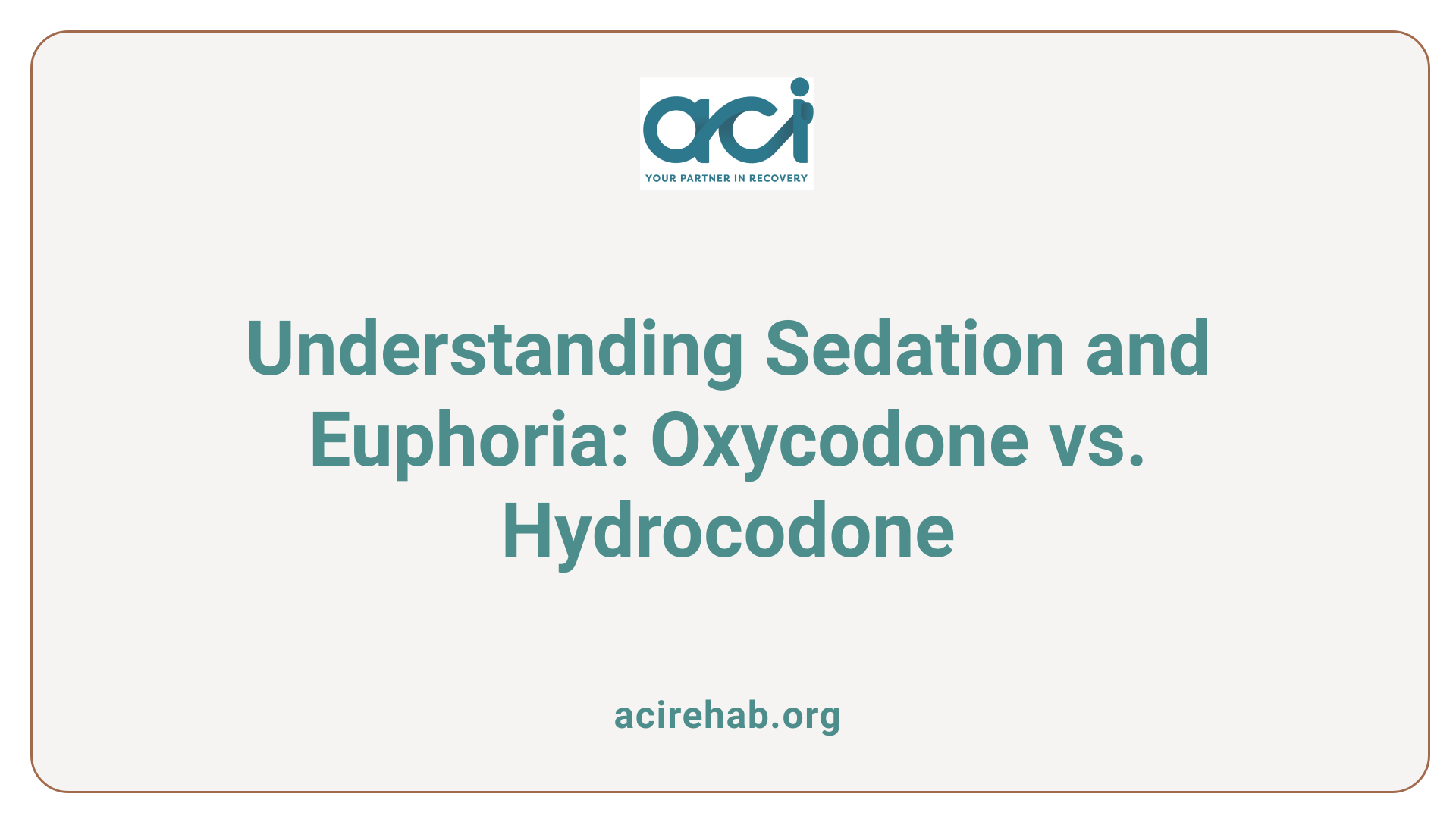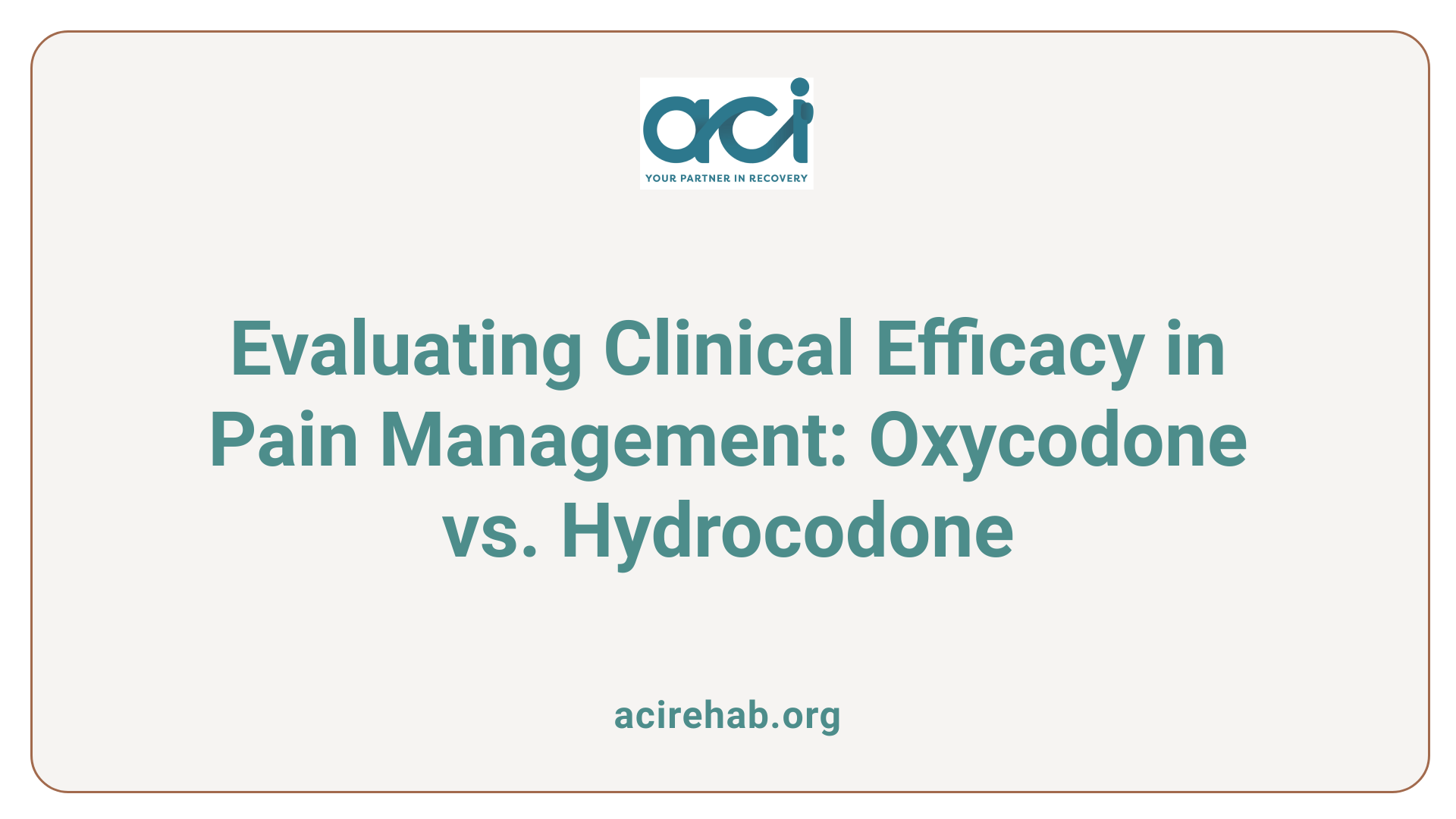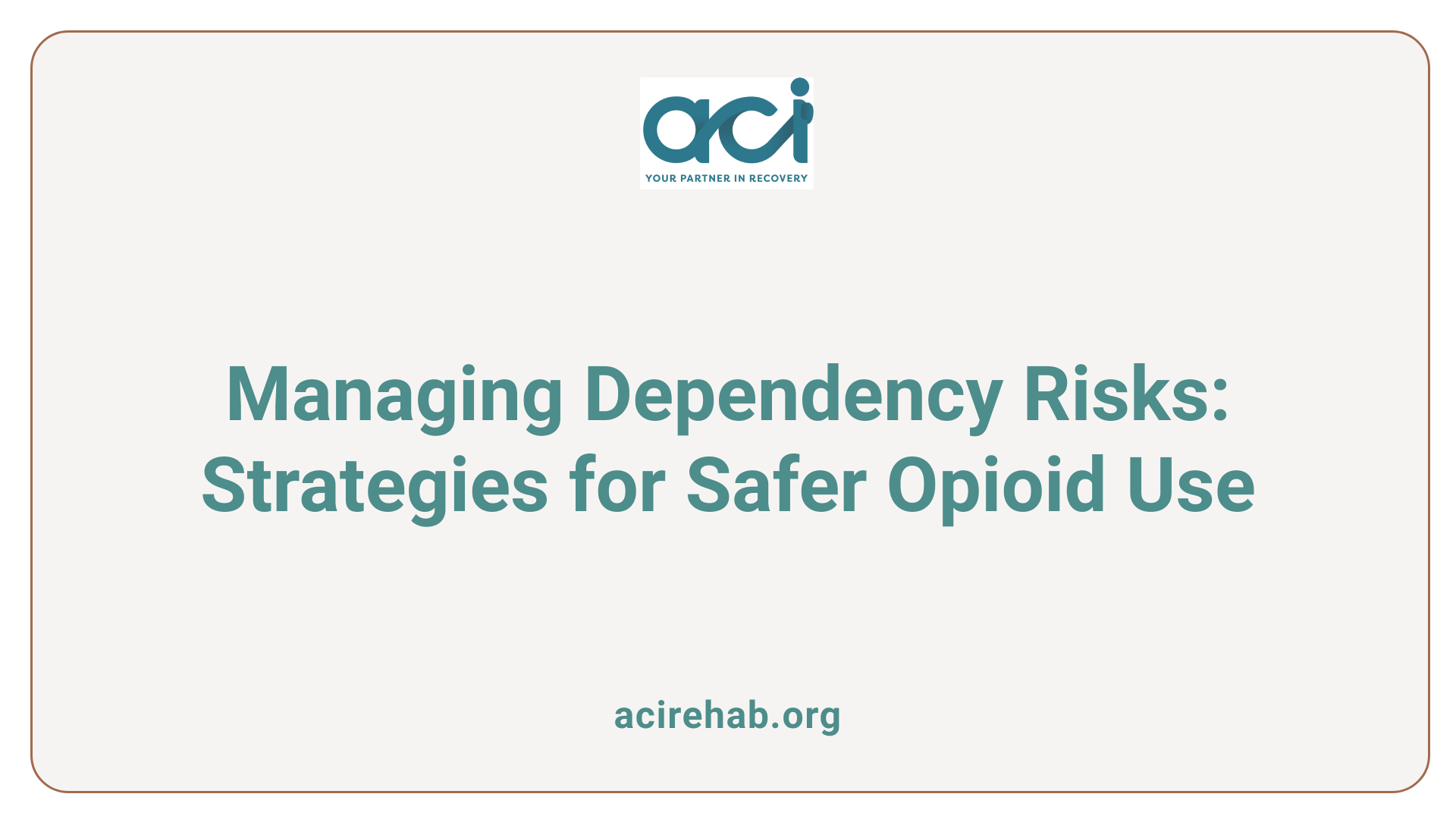Introduction to Hydrocodone and Oxycodone
Hydrocodone and oxycodone are two of the most widely used prescription opioids for managing moderate to severe pain. Despite their similar uses in pain relief, these medications have distinct differences in terms of potency, applications, and side effects, all of which contribute to their prescription practices and the way patients respond to them. This article seeks to delve into the unique aspects of each drug, drawing from clinical studies and expert insights to offer a comprehensive comparison tailored for both patients and healthcare providers seeking informed choices in pain management.
Chemical and Potency Differences

What are the differences between oxycodone and hydrocodone?
Oxycodone and hydrocodone differ fundamentally in their chemical composition and strength. Oxycodone is derived from thebaine, while hydrocodone comes from codeine. This variation in source impacts their respective potency and the way they are prescribed.
Potency Comparison
Oxycodone is generally considered to be more potent than hydrocodone, meaning a lower dose of oxycodone can provide similar pain relief compared to a higher dose of hydrocodone. This potency difference makes oxycodone a preferred option for more severe pain management, particularly in chronic scenarios. Despite their similar analgesic effects, oxycodone poses a higher risk of addiction.
| Property | Oxycodone | Hydrocodone |
|---|---|---|
| Derivation | Derived from thebaine | Derived from codeine |
| Potency | More potent | Less potent |
| Typical Formulation | Available in immediate and extended-release | Primarily in combination with acetaminophen |
| Common Brand Names | OxyContin, Percocet | Vicodin, Lortab |
Prescription Practices
In clinical settings, hydrocodone is the most frequently prescribed opioid in the U.S., often combined with acetaminophen in medications to enhance its pain-relief efficacy. On the other hand, oxycodone is available in pure and combination forms, providing flexibility for treatment options. Both medications carry inherent risks like addiction and respiratory issues, but hydrocodone’s combination with acetaminophen may elevate the potential for liver damage, necessitating careful monitoring by health professionals.
Sedative and Euphoric Effects of Opioids

Which drug causes more sleepiness, oxycodone or hydrocodone?
When comparing the sedative effects of oxycodone and hydrocodone, hydrocodone is generally known to induce more tiredness or drowsiness. Users often report that this opioid tends to be linked with a greater sensation of sleepiness. Despite both drugs having the potential to cause sedation, hydrocodone is more frequently associated with this side effect. Oxycodone, while slightly stronger in pain relief, is notably linked to gastrointestinal issues such as constipation. Although both opioids showcase similar side effects and pose risks of addiction, their profiles regarding sedation clearly differ. Therefore, when the concern is about inducing sleepiness, hydrocodone stands out as the more sedative option.
Are there any differences in the euphoric effects between oxycodone and hydrocodone?
Studies indicate that both oxycodone and hydrocodone can produce euphoric effects, but oxycodone tends to exhibit a higher potential for abuse. This is likely due to its increased likability scores and fewer negative side effects reported. The research highlights that there aren’t significant clinical differences in the immediate euphoric sensations between these opioids, which can complicate issues of misuse. While hydrocodone is commonly prescribed, those who abuse opioids often gravitate towards oxycodone. Moreover, inconsistencies in dosing guidelines from various drug information sources versus CDC recommendations have raised alarms regarding oxycodone’s potential for addiction and overdose. It emphasizes the importance for healthcare providers to strictly follow established guidelines to minimize these associated risks.
| Aspect | Oxycodone | Hydrocodone |
|---|---|---|
| Sedative Effects | Moderate drowsiness | More frequent tiredness |
| Euphoric Effects | Higher abuse liability | Less likely to be misused |
| Common Side Effects | Nausea, constipation | Drowsiness, constipation |
Understanding Side Effects and Long-term Implications

Common side effects
Both hydrocodone and oxycodone share several common side effects. Users may experience:
- Drowsiness: Both medications typically cause sedation, but drowsiness may be more pronounced with hydrocodone.
- Nausea: Reports of nausea occur with both, though oxycodone combinations may increase its incidence.
- Constipation: Hydrocodone tends to cause constipation significantly more often than oxycodone.
- Dizziness: Users may feel lightheaded, particularly when initiating treatment.
- Dry mouth: A common effect that can be uncomfortable but generally manageable.
Long-term use risks
Long-term use of either opioid can lead to serious consequences. These include:
- Dependence: Both medications can cause physical dependence, necessitating increasing doses for the same relief, leading to tolerance.
- Addiction: Risks of addiction are substantial, with hydrocodone showing a 9% greater risk of transitioning to long-term use compared to oxycodone.
- Severe respiratory issues: Long-term use can also exacerbate respiratory depression, especially in combination with other CNS depressants.
Impact of addiction potential
Addiction potential is high for both opioids, making them classified as Schedule II controlled substances. Signs of misuse include:
- Taking larger doses than prescribed.
- Experiencing mood swings or withdrawal symptoms.
- Difficulty controlling use.
Understanding these factors is crucial for safer pain management.
Clinical Efficacy and Usage in Pain Management

Pain Relief Studies
Hydrocodone and oxycodone are both validated options for managing moderate to severe pain, frequently employed when standard pain management strategies prove ineffective. Several studies demonstrate their effectiveness, especially in acute pain situations, such as post-surgical recovery or musculoskeletal injuries. Research indicates that both opioids provide comparable analgesic benefits, which is crucial for clinicians when determining the best course of pain management.
Clinical Trials and Results
A critical double-blind, randomized controlled trial involving 240 adults assessed the comparative effectiveness of oxycodone/acetaminophen versus hydrocodone/acetaminophen for acute pain. Results showed no significant difference in pain relief at both 30 and 60 minutes post-administration, with approximately 60% of patients reporting substantial pain reduction using either medication. Hydrocodone did show higher rates of constipation (21%) compared to oxycodone, which recorded none, highlighting the importance of monitoring side effects while managing pain.
Applications in Different Pain Conditions
Both medications shine in treating specific conditions, with oxycodone often reserved for more severe pain scenarios such as cancer-related pain, while hydrocodone is commonly prescribed for moderate pain like that following surgery. Their similar effectiveness in acute pain management provides a flexible approach to personalized pain management strategies, helping clinicians make informed decisions based on individual patient needs.
Pharmacological Insights and Metabolic Pathways
Metabolic Differences
Hydrocodone and oxycodone, both semi-synthetic opioids, are metabolized differently in the body. Hydrocodone primarily converts into hydromorphone, while oxycodone undergoes metabolism to form oxymorphone. These metabolic pathways can influence not only the efficacy but also the side effects experienced by users, particularly concerning gastrointestinal issues and sedation.
Presence of Metabolites
Urine tests commonly measure specific metabolites to evaluate drug use. For hydrocodone, the metabolite norhydrocodone (NHC) is the key compound detected, typically found in higher concentrations than hydrocodone itself. In contrast, oxycodone is often detected alongside its metabolite noroxycodone (NOC), usually present in significant quantities as well.
Laboratory Differentiation
Can a lab differentiate between hydrocodone and oxycodone? Yes, a lab can differentiate between hydrocodone and oxycodone through urine drug tests. While hydrocodone can be detected as an impurity in oxycodone pills, it typically appears in concentrations of up to 1%. Similarly, hydromorphone can also be present in trace amounts in individuals taking oxycodone. The lab can analyze the ratios of hydrocodone and hydromorphone to oxycodone; if these ratios are less than 1%, it suggests that these substances are impurities from the oxycodone pills rather than from external use. This analytical approach allows for a clearer interpretation of urine drug test results in patients prescribed oxycodone.
Risks of Dependency and Management Strategies

Long-term use risks
Both hydrocodone and oxycodone carry significant risks if used over prolonged periods. Long-term exposure can lead to physical dependence, tolerance, and a heightened risk of addiction. Research shows hydrocodone has a 9% greater risk of transitioning to long-term use compared to oxycodone, with nearly 23% of patients treated with hydrocodone moving to long-term dependency when receiving multiple prescriptions.
Strategies for prevention of addiction
Preventing addiction begins with careful monitoring and dosage adjustments based on individual patient responses. Using low starting doses, combined with regular assessments of pain management efficacy and side effects, can mitigate the chances of dependency. Educating patients about the potential for addiction and encouraging adherence to prescribed dosages are also crucial.
Healthcare provider roles
Healthcare providers play a vital role in opioid management, ensuring that medications like hydrocodone and oxycodone are prescribed only when necessary. They should regularly evaluate the patient’s pain relief, monitor signs of misuse, and consider non-opioid alternatives whenever appropriate. Incorporating multidisciplinary approaches can enhance patient care and reduce reliance on opioids.
Regulations and Prescriptive Practices
What are the implications of Schedule II classification?
Hydrocodone and oxycodone are classified as Schedule II controlled substances, indicating their high potential for abuse, dependence, and addiction. This classification necessitates rigorous regulations surrounding their prescription and dispensing. Physicians must follow strict guidelines, only prescribing these medications when absolutely necessary and often requiring in-person consultations for refill requests.
What guidelines do doctors follow when prescribing these opioids?
Prescriptive guidelines recommend starting patients on low doses and closely monitoring their response to treatment. Hydrocodone is typically reserved for moderate pain relief, often combined with acetaminophen, whereas oxycodone may be used for more severe pain, including chronic conditions. The risk of transitioning to long-term use is notable, with hydrocodone presenting a 9% higher risk compared to oxycodone, further influencing prescriber’s choices.
How can risks be mitigated when prescribing?
Risk mitigation strategies include comprehensive patient evaluations before prescribing, monitoring for potential misuse, and educating patients about the signs of dependence. Regular follow-ups are crucial, enabling adjustments to treatment plans as necessary and minimizing the likelihood of addiction while ensuring adequate pain management.
Conclusion: Towards Informed Opioid Use
The decision to use hydrocodone or oxycodone should be made with a thorough understanding of both medications’ attributes, risks, and benefits. Both drugs offer significant pain relief opportunities but present equally significant challenges in terms of addiction risk and side effect management. By equipping patients and healthcare providers with detailed knowledge about these opioids, safer and more effective pain management strategies can be developed, fostering better patient outcomes and reducing the potential for misuse and addiction. It is imperative to adhere to guidelines and engage in transparent discussions about the possible risks when prescribing or using these powerful medications.
References
- Hydrocodone vs. Oxycodone: The Difference Explained – WebMD
- Comparison of oxycodone and hydrocodone for the … – PubMed
- Hydrocodone Vs Oxycodone: Similarities & Differences
- Opiates or Opioids — What’s the difference? – Oregon.gov
- What You Need to Know About Hydrocodone Vs Oxycodone
- Long-term use of hydrocodone vs. oxycodone in primary care
- Hydrocodone Vs. Oxycodone: Unraveling the Differences
- Hydrocodone vs. Oxycodone: What’s the Difference? | Opioids
- [PDF] oxycodone and hydrocodone: detection in urine, oral fluid, and blood

